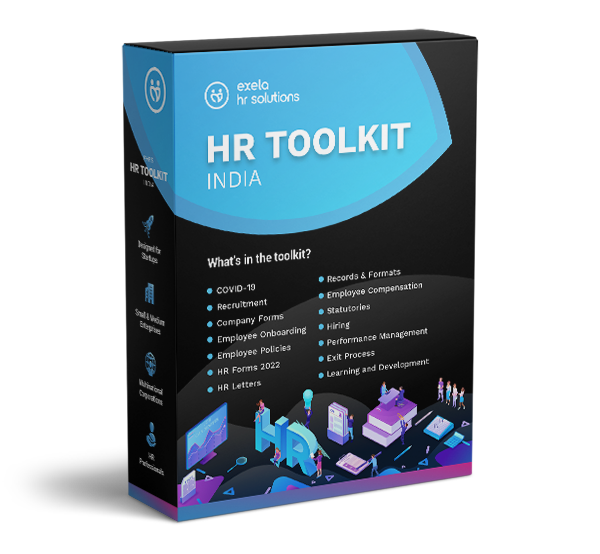
Organizational structure is an essential component of every company, whether consciously acknowledged or not. It serves as the framework for assigning roles, responsibilities, job functions, accountability, and decision-making authority within the organization. Similar to the overall organizational structure, the structure of the payroll function is equally important. It should be designed to align with the company's goals and objectives to ensure efficient payroll management and overall organizational success.
Managing payroll involves various tasks, such as calculating employee hours, processing payments, tax withholding, and maintaining accurate financial records for your business. The intricacies of payroll management, from handling sensitive employee data to tax calculations and fund transfers, can be complex and carry legal responsibilities. It is crucial to ensure compliance with legal requirements when managing payroll. Additionally, structuring the payroll function is vital to any organization's payroll strategy. So, let's discover ways to structure your company's payroll for better efficiency and employee satisfaction. Also, find the 7 FAQs when it comes to the ideal payroll solution for your organization.
Why do you need to structure your payroll function?
Structuring your company's payroll function is crucial for many reasons. By investing in well-designed payroll processing, organizations can effectively manage one of the most critical aspects of their operations while supporting overall business success. Here are a few reasons why you must consider structuring your organizational payroll.
-
Accuracy and timeliness
A well-structured payroll function ensures accurate and timely payment to employees. Organizations can minimize errors in calculations, deductions, and tax withholdings by establishing transparent processes, roles, and responsibilities and leveraging technology. This, in turn, helps build trust and maintain positive employee relations.
-
Compliance with laws and regulations
Payroll structuring ensures organizations comply with various labor laws, tax regulations, and reporting requirements. By staying up-to-date with changing regulations, implementing internal controls, and conducting periodic audits, companies can avoid penalties, legal issues, and reputational damage associated with non-compliance.
-
Efficiency and productivity
Structuring payroll optimizes efficiency and productivity within the organization. By automating manual processes, integrating systems, and streamlining workflows, payroll staff can focus on value-added tasks instead of repetitive administrative work. This frees up time for strategic initiatives and enhances overall productivity.
-
Cost savings
Effective payroll processing can lead to cost savings in multiple ways. Automation reduces manual labor and associated costs, while accurate calculations and compliance prevent costly errors and penalties. Moreover, streamlined processes reduce administrative burdens, allowing staff to work on other critical areas.
-
Employee satisfaction and retention
Timely and accurate payment is crucial to employee satisfaction. A well-structured payroll function ensures employees receive their wages and benefits without delays or errors, fostering a positive work environment. This contributes to higher employee morale, engagement, and retention.
-
Data security and confidentiality
Payroll structuring emphasizes secure data management practices, protecting sensitive employee information. Organizations can mitigate the risk of data breaches and maintain confidentiality by implementing appropriate safeguards, encryption measures, and access controls.
-
Reporting and decision-making
Structured payroll systems provide accurate and comprehensive reporting capabilities. This enables management to access key payroll data, such as labor costs, tax liabilities, and benefits expenses. Such data support informed decision-making, financial planning, and strategic resource allocation.
How to structure your payroll?
A well-functioning payroll department is crucial for maintaining high employee satisfaction and improving overall organizational productivity and efficiency. Employees have a rightful expectation that their organizations will consistently and accurately compensate them according to their employment contracts.
However, a slow, overly complex, or error-prone payroll process can strain employee and employer relationships and waste valuable time for HR teams. To avoid such challenges and achieve efficiency, compliance, and timely payment, it is essential to structure the payroll function effectively.
Determining the structure of the payroll function is a key component of any organization's payroll strategy, regardless of its global or domestic operations. The structure primarily depends on two factors: the concentration of payroll activities and the desired level of outsourcing versus in-house management of these activities. In the following sections, we will guide you through the considerations for each of these factors.
-
Degree of concentration in payroll activities
As a company expands its operations across different states, provinces, or national borders, the workforce grows in size and diversity. Consequently, the payroll function becomes more intricate due to the diverse regulations and laws in each specific region.
Initially, companies often opt to establish separate payroll departments for each business unit or location, which usually leads to inconsistent processes, duplication of tasks, and inefficiencies. However, best practices suggest adopting a centralized model for administrative and transactional finance activities, including payroll.
According to a survey, 77% of businesses have implemented centralized payroll systems.
In the case of large global organizations, centralization is typically implemented regionally, as relying on a single centralized team may not suffice for the entire global workforce.
In an optimal scenario where organizations have well-developed payroll departments, they aim to create a Payroll Center of Excellence (COE) responsible for overseeing governance, policies, processes, continuous improvement, standards, technology, automation strategy guidance, and establishing performance metrics for the entire organization's payroll operations. Subsequently, these policies and guidelines can be customized as per the specific requirements of individual regions or locations.
Moreover, assigning a global process owner who can oversee the entire payroll processing is beneficial, ensuring dedicated governance and focused attention to the process.
For organizations with a wide geographical presence, exploring the option of establishing regional payroll shared services centers may be beneficial. These centers promote the growth of process knowledge, standardization, improved reporting and analysis capabilities, enhanced compliance oversight, and eliminate redundant tasks.
-
Level of activities managed in-house vs. outsourced
Typically, businesses opt to outsource non-core tasks or those that external parties can perform more effectively. This decision is driven by factors such as cost reduction, improved efficiency, adherence to regulations, and access to specialized knowledge.
Payroll processing can be intricate and challenging, especially considering the dynamic nature of rules and regulations across industries and countries. It is not surprising that many businesses opt to outsource their payroll operations, either partially or entirely, to external providers. This approach offers several advantages, making it a popular choice for organizations. Here are some of the key reasons why businesses choose payroll outsourcing:
- Saves time
- Minimizes payroll errors
- Improves security
- Maintains compliance
- Integrates data
- Facilitates employee self-service
Typically, experts suggest considering a comprehensive payroll outsourcing solution that seamlessly integrates various components of workforce management with the payroll system. This inclusive platform covers the entire spectrum, encompassing recruitment, benefits, performance evaluation, and more. By consolidating these functions into a unified system, businesses gain advantages such as generating comprehensive reports, improving efficiency by replacing multiple platforms with a single one, fostering effective communication between employees and employers, and other benefits.
Also Read: Benefits of Integrating Payroll and HR Systems
How to Manage an Effective Payroll Department
Managing an effective payroll department is crucial for any organization's financial stability and employee satisfaction. A well-run payroll department ensures accurate and timely payment processing, compliance with tax regulations, and seamless communication with employees. This section will explore essential strategies and best practices to manage a payroll department efficiently. From establishing streamlined processes to leveraging technology and prioritizing compliance, these insights will empower businesses to optimize payroll operations, reduce errors, and enhance overall organizational effectiveness.
- Have a standardized and streamlined payroll system
- Ensure payroll integration with other business functions
- Update payroll software
- Stay up-to-date on the latest employment laws
- Establish a payroll calendar
- Have a backup
- Outsource your payroll process
- Perform regular audits
- Hire qualified staff
Choosing the Right Payroll System - 7 FAQs
-
What features should I look for in a payroll system?
When evaluating payroll solutions, key features to consider typically include automated payroll calculations, tax management, direct deposit capabilities, benefits administration, reporting and analytics, compliance support, and integration with other HR or accounting systems.
-
Should I opt for an in-house or cloud-based payroll system?
Both in-house and cloud-based payroll systems have their advantages. In-house systems provide more control and customization, while cloud-based systems offer accessibility, scalability, and automatic updates. Consider your organization's size, IT infrastructure, budget, and data security requirements when making this decision.
-
How do I ensure data security and compliance?
Data security and compliance are paramount in payroll management. Look for payroll solutions that employ strong encryption, data backups, access controls, and compliance features for tax regulations and labor laws. Additionally, consider the system's track record for security breaches and their measures to address them.
-
Can the payroll system handle my organization's specific needs?
Evaluate whether the payroll system can accommodate your organization's unique requirements, such as multi-state or international payroll, complex compensation structures, timekeeping integration, employee self-service portals, or specific reporting needs. Ensure the system is flexible enough to adapt to your evolving payroll demands.
-
What level of customer support is provided?
Consider the availability and quality of customer support the payroll solution provider offers. Look for prompt assistance, training resources, user forums, and a responsive support team that efficiently addresses your inquiries or troubleshoots issues.
-
How much does a payroll system cost?
Payroll system costs can vary depending on factors like the size of your organization, the number of employees, and the complexity of your payroll processes. Consider both upfront costs, such as software licenses or implementation fees, as well as ongoing fees for maintenance, updates, and support. Evaluate the system's return on investment (ROI) regarding time savings, reduced errors, and improved efficiency.
-
Can the payroll system scale with my organization's growth?
Ensure that the chosen payroll solution can accommodate your organization's growth and future needs. Assess its scalability, ability to handle an increasing employee count, and compatibility with expanding business operations. Consider long-term partnerships and whether the system can adapt as your organization evolves.
Conclusion
Outsourcing payroll management to third-party service providers has emerged as a prominent trend in the business world. This trend is observed among companies of various sizes, as they recognize the significant cost savings achieved through outsourcing. Particularly for small business owners lacking the necessary resources to develop or update their payroll systems, opting for a professional, comprehensive payroll management company offers a strategic and economically viable solution.
47% of companies have chosen payroll outsourcing for their operations.
Exela HR Solutions provides highly effective, end-to-end payroll solutions that are customized to meet the unique requirements of businesses. Our comprehensive platform assists organizations in automating payroll processing and offers self-service tools for seamless payroll management by employees. Reach out to our experts at Exela HR Solutions today and discover our range of payroll services!
DISCLAIMER: The information on this site is for general information purposes only and is not intended to serve as legal advice. Laws governing the subject matter may change quickly, and Exela cannot guarantee that all the information on this site is current or correct. Should you have specific legal questions about any of the information on this site, you should consult with a licensed attorney in your area.





